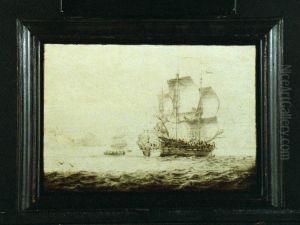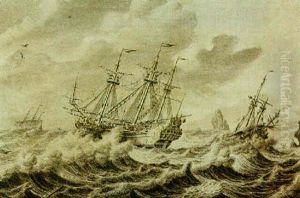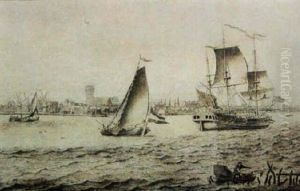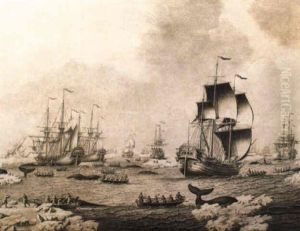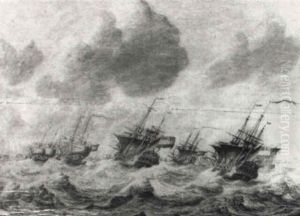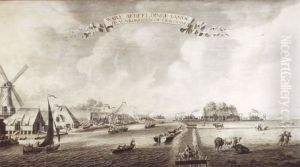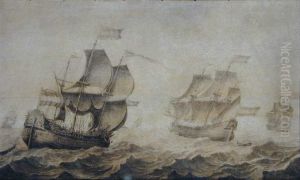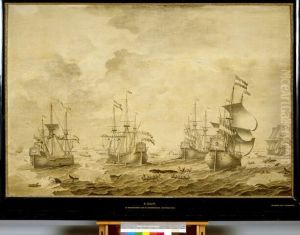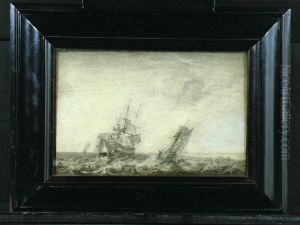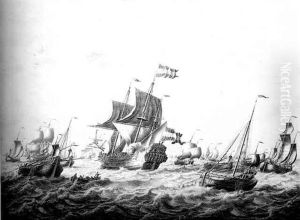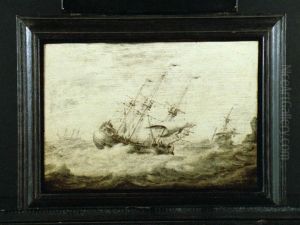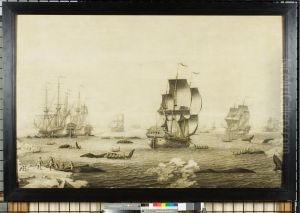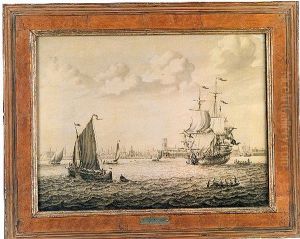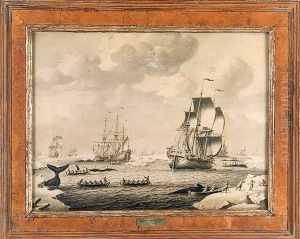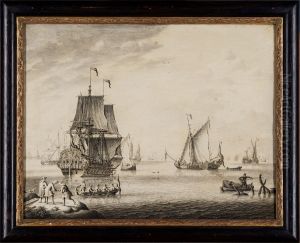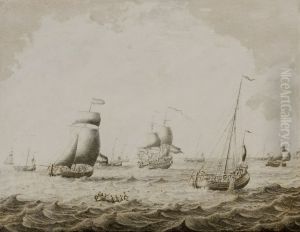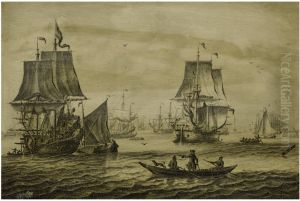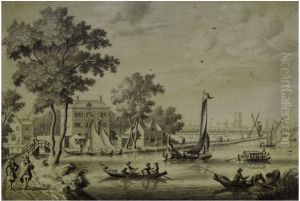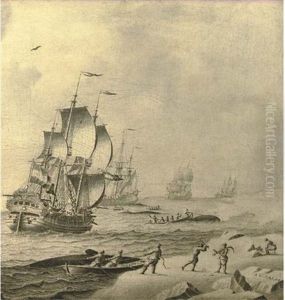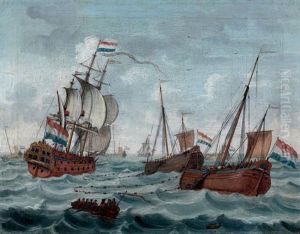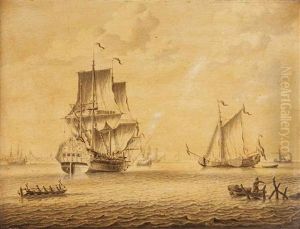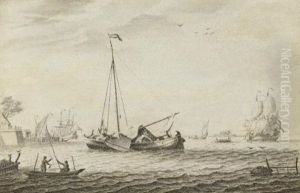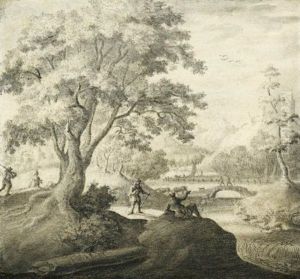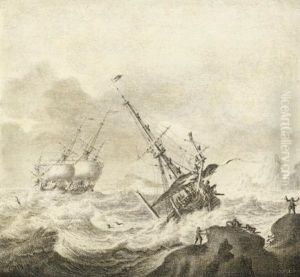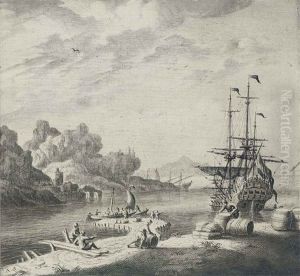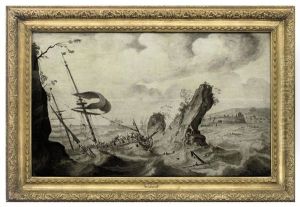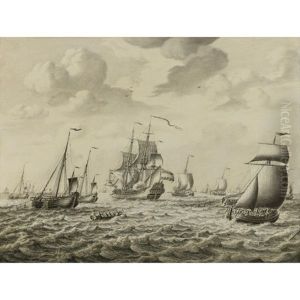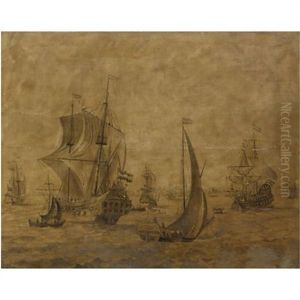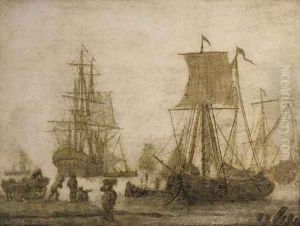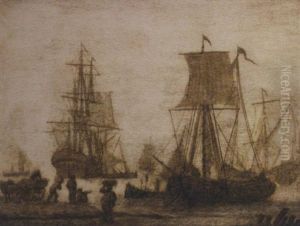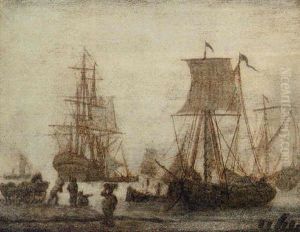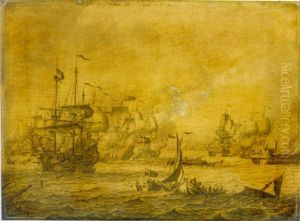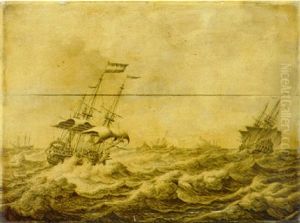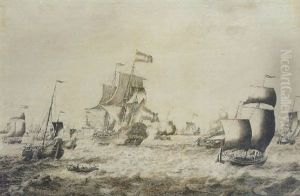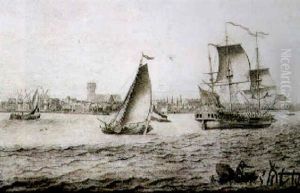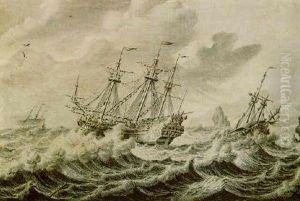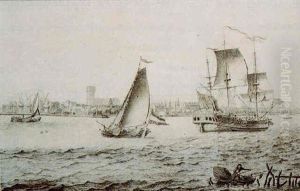Adriaen Van Salm Paintings
Adriaen van Salm, also known as Adriaen van Salm, was a Dutch painter, draughtsman, and printmaker born in 1660 in Dirksland, a small town in the province of South Holland, Netherlands. His work is notably less documented than many of his contemporaries, leading to a more enigmatic profile in the annals of art history. Despite this, van Salm is recognized for his contributions to the Dutch Golden Age of painting, a period characterized by its prolific production of art during the 17th century, a time when Dutch trade, science, and art were among the most acclaimed in the world.
Van Salm's oeuvre primarily includes landscapes and marine scenes, reflecting the Dutch fascination with their natural and cultivated environments, as well as their maritime prowess. Like many artists of his time, he was influenced by the dramatic interplay of light and shadow, a hallmark of Dutch painting. His works exhibit a keen attention to detail, particularly in depicting water and ships, suggesting a deep familiarity with the Netherlands' waterways and maritime activities.
Little is known about van Salm's training or early career. It is speculated that he may have been a pupil or associate of more prominent artists of the time, which was a common practice for budding artists during the Dutch Golden Age. His style suggests that he was part of the rich tradition of landscape and seascape painting prevalent in the Netherlands during the 17th and early 18th centuries, which included artists like Jan van Goyen, Simon de Vlieger, and Ludolf Bakhuizen.
Adriaen van Salm's contributions to Dutch art, though not as widely recognized as those of his peers, remain an important part of understanding the breadth and diversity of Dutch Golden Age painting. His depictions of the Dutch landscape and maritime scenes continue to offer insights into the era's cultural and environmental contexts. Van Salm passed away in 1720, leaving behind a modest but meaningful body of work that continues to be studied and appreciated for its artistic and historical value.
